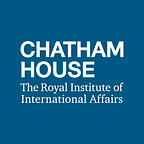Russia’s Withdrawal From Syria: Five Things You Should Know
To the surprise of the international community, Russia announced on the evening of 14 March that it would begin to withdraw operational forces from Syria. The announcement came a day before the fifth anniversary of the first protests against the Assad regime and almost six months after Russia began airstrikes against opposition forces and terrorist groups in Syria. Here Chatham House experts tell you what you need to know about the move.
(1) This is a partial withdrawal with an unspecified timescale.
Both the naval base in Tartus and the air base in Khmeimim will remain fully operational, controlled by the Russians and guarded by their modern air-defence S-400 missile systems. Russian military advisors and instructors will continue their service in the country and,according to some estimates, Moscow will keep up to 1000 people on the ground. Russian arms supplies to the Assad regime will continue and Russian aircraft can quickly be sent back to Syria should Moscow feel the situation requires it.
(2) It was Putin’s decision — not Assad’s.
The fact that Syrian state-run media needed to emphasize the scale-down was “in coordination” with President Assad is telling. Damascus would not de-escalate the air campaign if it had a choice - Assad recently said he was determined to capture the whole country. Russia, on the other hand, wants to be seen as a peace-maker. The withdrawal sends a clear message to Damascus that Moscow does not share Assad’s goal and that he will need to be more flexible in negotiations if he wants to retain Russian support. Russia’s interest is in maintaining its influence in the region, but it does not necessarily need Assad to do so.
(3) ‘Mission accomplished’ is a bit of a stretch.
Russia’s intervention in support of the Syrian regime in September last year significantly weakened the opposition and enabled the regime to end a trend of swift defeats. In November, the Syrian army broke the sieges of the Kweiris Air Base and the Shi’a towns of Nubl and al-Zahraa, and in February they cut rebel supply lines between Aleppo and Turkey and seized dozens of towns in Aleppo, Latakia, Hama, and Deraa with Russian air support. However, Assad has only re-captured a fraction of the territory he lost in the year prior to Russian intervention and, with his forces thinly stretched over several large fronts, he will be unable to win the war outright.
(4) Nonetheless, the intervention has achieved several key Russian objectives.
The intervention’s primary achievement has been granting Russia — and its ally, Assad — a seat at the negotiating table. Before Russian intervention the West was calling for Assad’s departure as a precondition for peace talks: the strengthening of his position has made that view untenable. More broadly the intervention has demonstrated Russia’s significance as a key regional player and made the West look flat-footed after the relative failure of its own intervention to support the opposition. It has also provided vital training for other operations Russia may wish to conduct, whether in Ukraine or elsewhere. Russia had a clear idea of what it wanted and has been smart to get out quickly and cleanly. This “victory” can be easily sold to the Russian public.
(5) The withdrawal should be good news for peace talks.
Having de-escalated the conflict on the eve of the resumption of peace talks, Russia is in a strong position to present itself as a peace-maker and push for its own terms at the talks in Geneva. More broadly, the withdrawal is likely to have a positive effect on negotiations. The opposition were unlikely to compromise while under bombardment, while Assad knows he cannot win the ground war alone and is more likely to compromise now that a military solution is further away.
See more of Chatham House’s work on Syria, including interactive maps, animations and more.
